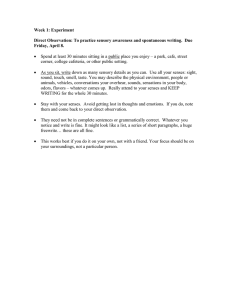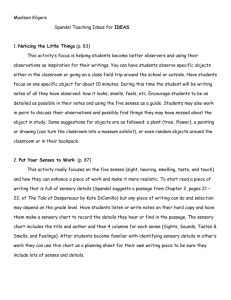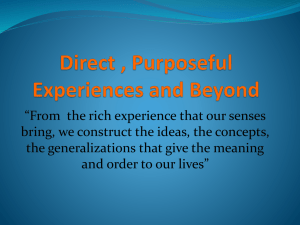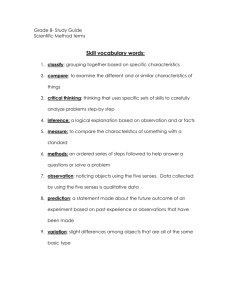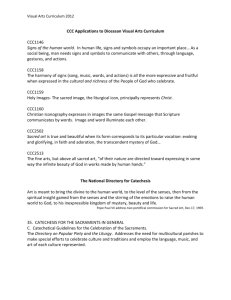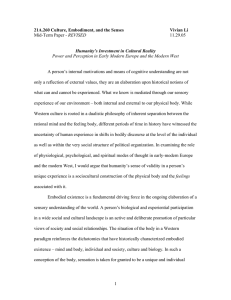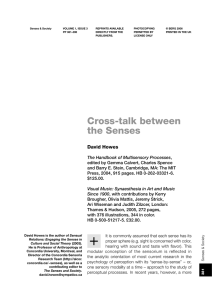Document 10636708
advertisement
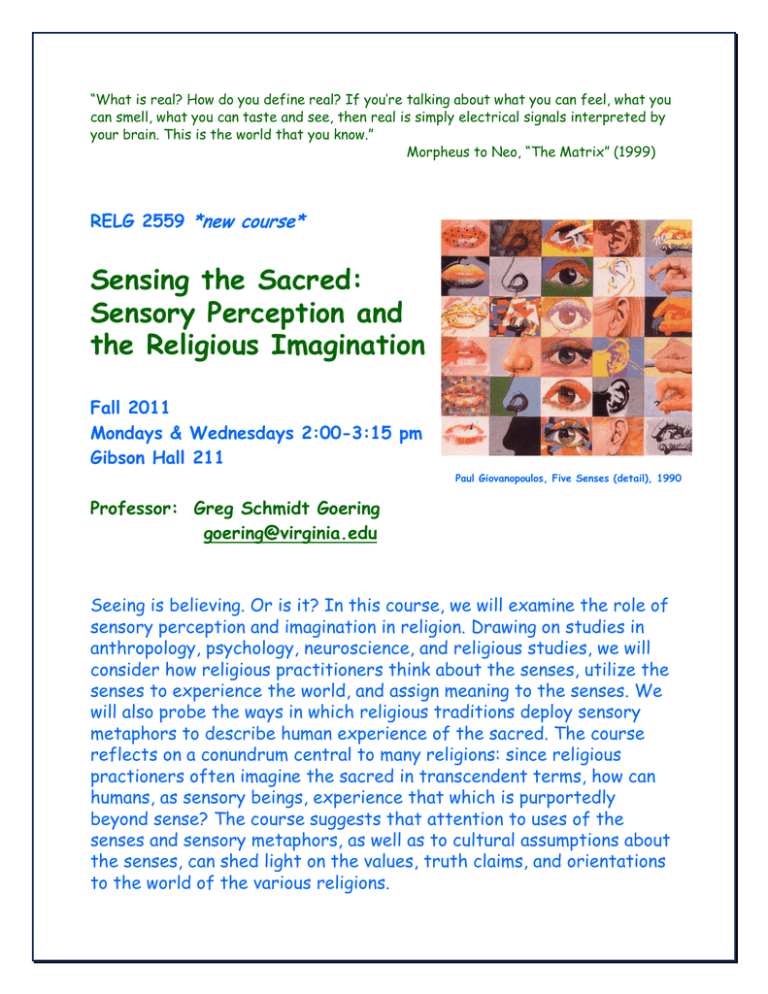
“What is real? How do you define real? If you’re talking about what you can feel, what you can smell, what you can taste and see, then real is simply electrical signals interpreted by your brain. This is the world that you know.” Morpheus to Neo, “The Matrix” (1999) RELG 2559 *new course* Sensing the Sacred: Sensory Perception and the Religious Imagination Fall 2011 Mondays & Wednesdays 2:00-3:15 pm Gibson Hall 211 Paul Giovanopoulos, Five Senses (detail), 1990 Professor: Greg Schmidt Goering goering@virginia.edu Seeing is believing. Or is it? In this course, we will examine the role of sensory perception and imagination in religion. Drawing on studies in anthropology, psychology, neuroscience, and religious studies, we will consider how religious practitioners think about the senses, utilize the senses to experience the world, and assign meaning to the senses. We will also probe the ways in which religious traditions deploy sensory metaphors to describe human experience of the sacred. The course reflects on a conundrum central to many religions: since religious practioners often imagine the sacred in transcendent terms, how can humans, as sensory beings, experience that which is purportedly beyond sense? The course suggests that attention to uses of the senses and sensory metaphors, as well as to cultural assumptions about the senses, can shed light on the values, truth claims, and orientations to the world of the various religions.
